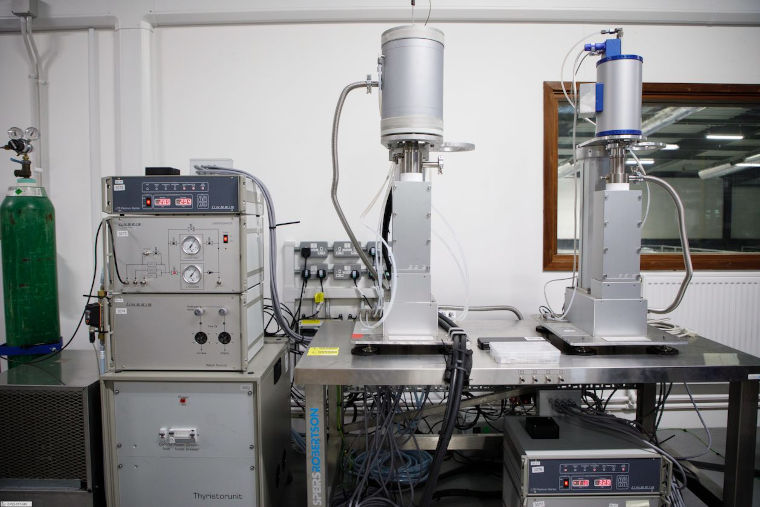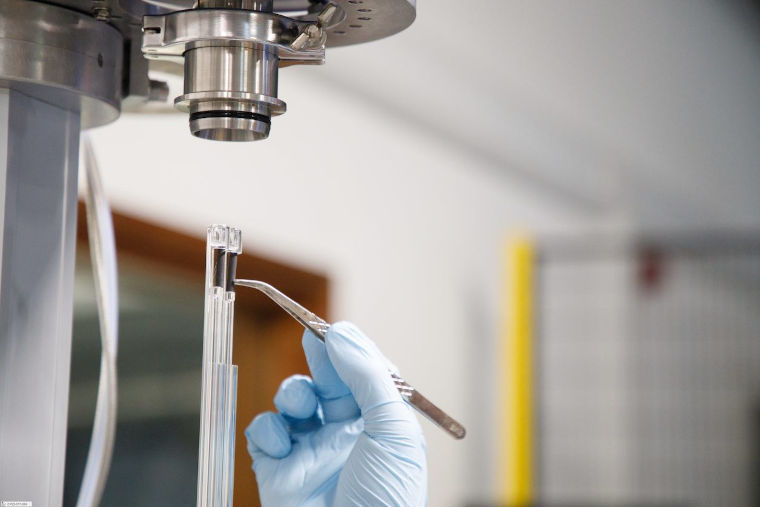Dilatometer: Linseis L75V PT
The Dilatometer is used to measure the thermal expansion of materials as a function of temperature.
Overview
A controlled atmosphere furnace heats or cools a sample to a target temperature whilst a push-rod transfers the vertical expansion of the sample into a high resolution strain gauge. From this the relative increase in length and the coefficient of thermal expansion (CTE) can be calculated.

Applications
Change in length of solid materials as a function of temperature.

Technical specification
- high temperature furnace: RT to 2000°C
- low temperature furnace: -150°C to 500°C
- vertical push-rods for minimal friction on expansion and guaranteed push-rod contact
- measurement range: ±2.5mm, resolution: 0.03nm
- variable force contact rods
- dual push-rod setup for either higher throughput or direct reference measurement
- choice of atmosphere: Inert / Oxidising / Reducing / Vacuum
- CTE accuracy: ±0.5%
- max data acquisition rate: 2MHz
- temperature accuracy: ±0.5°C or 0.25%
- standard: ASTM E831 / ASTM D696